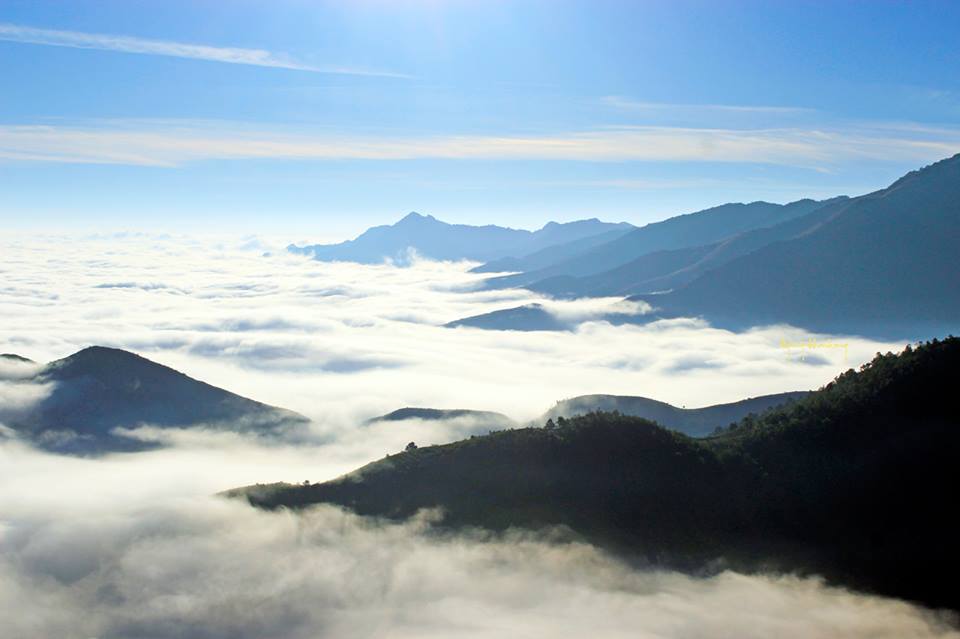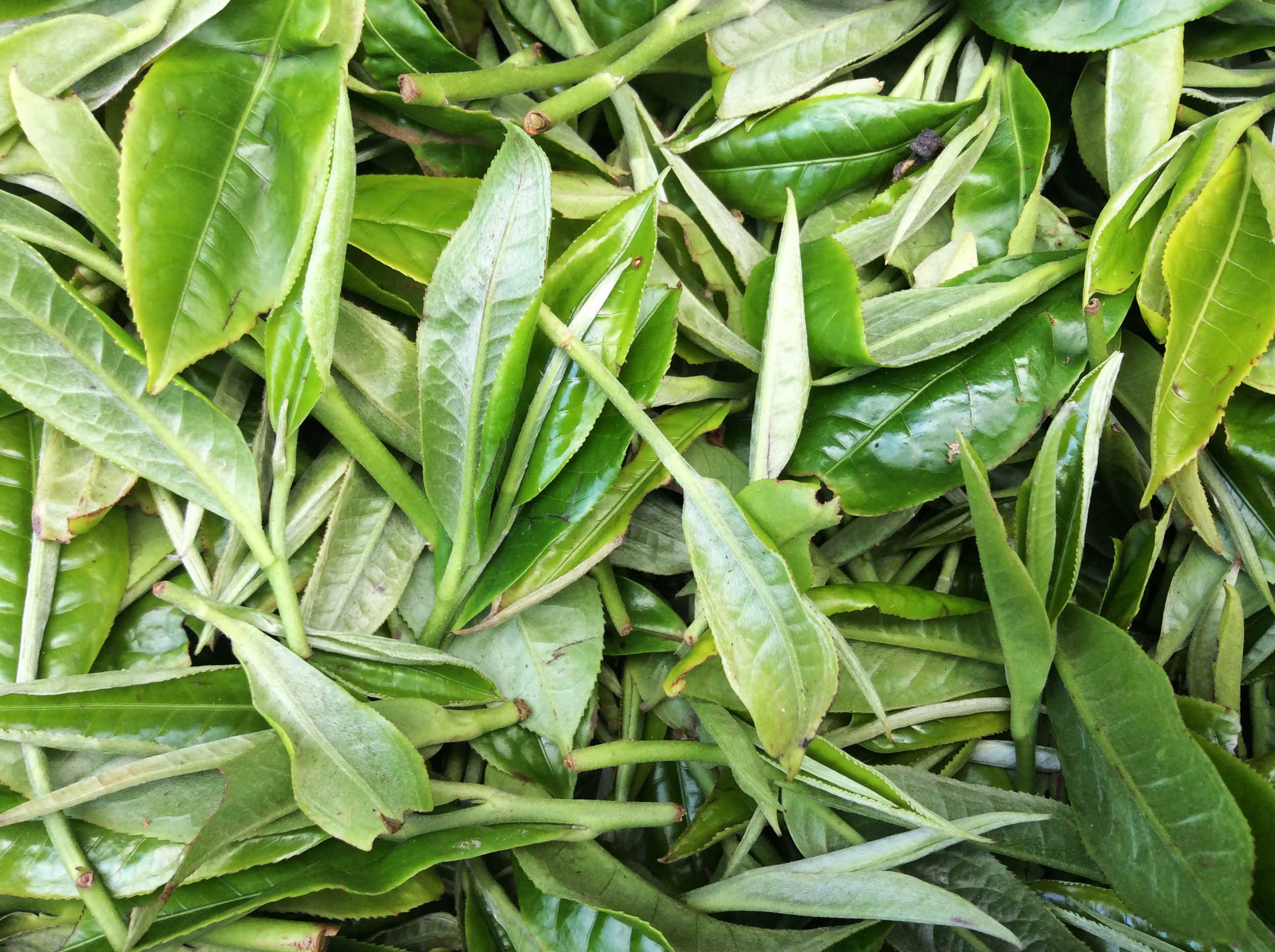Ta Xua is a commune locating 1600m-high above the sea level in Bac Yen district, Son La province. Due to its year-round cloudy weather, visitors fondly give it the name Cloud Heaven.
Unlike most young people who come here for the clouds, the tea enthusiasts come to Ta Xua to hunt for tea. Ta Xua climate and soil conditions are suitable for the growth of the tea plant. When in Ta Xua, besides the grain liquor Hang Chu and Tao Meo that are highly recommended, visitors are always suggested to give the snow shan tea a try.
Since the first spring Ba Van Tea set foot on Ta Xua, it has been 5 years. Today, after finishing our journey to Ta Xua for the spring tea batches, we decide to write down the experiences and thoughts for the tea plant and the tea industry in Ta Xua. We are delighted to share this with you.

Ta Xua, the Cloud Heaven
Down the memory lane
Ta Xua, more correctly Ta Sua, in Mong language, means the yard of herbs. Nowadays, not many people know about this meaning. When hearing it from a man of the Mong ethnic minority, I wonder why they call the land by that name. Is it because they have already aware of the value of the tea plant that Mother Nature has granted them?
In the spring of 2015, we came to Ta Xua the first time. Back in the days, there was just a little information about the place, and the road leading to the commune was dangerous. When we got close to Ta Xua, it was dark. My bike had a puncture, yet I was lucky enough to have a man patch it for me. Finally, we made it to the commune around 7 or 8 PM. At that time, there was only one homestay in Ta Xua, run by Mr. Dung Ngong, a small food court of Mr. Thien and his wife, which sells mostly dog products. I still remember his tall and thin stature. He was a man who can do everything from slaughtering the animals to build houses, do woodwork or autogenous welding. He even trades peach flower trees with the mainlanders in Tet holidays. Mr. Thien has a hobby of drinking grain liquor. He always uses the big beer mug instead of the small one to drink, as he is afraid that he might swallow the cup itself.
Nearby, there was another small food shop that sells nothing but instant noodles served with the spicy salted bamboo sprout.
The tea in Ta Xua
Types of tea
There are five types of tea in Ta Xua:
- The ancient tea: Processed by the Orthodox method using large woks or sometimes machinery. The raw material mostly comes from Ban Be, Mong Vang villages with big and hairy tea buds, providing strong yet tender, deep aroma and flavor. The tea is commonly hand-plucked with one bud and two or three leaves. Even if the Mong people were paid to pluck one bud and one leaf, they would not change the way.
- The 1968 snow shan: processed by woks or machinery, the raw material comes mostly from Mong Vang village, plucked one bud and one leaf, the buds are smaller than the first type.
- The young snow shan: Small buds with two leaves processed by machinery. The raw material comes mostly from Mong Vang, Chung Chinh, Ta Xua A villages.
- The ‘tra bau’: processed by machinery, the raw material comes mostly from Chung Chinh and Ta Xua A villages. The products are often green and black, similar to the tea in Thai Nguyen or Phu Tho province.
- Hang Dong snowshan: Since 2019, due to the tea market’s demand for big and hairy tea buds, the tea in Hang Dong becomes popular. Hang Dong tea has a lighter, less bitter flavor, mainly favored by tourists.
Based on the material and processing method, the price of Ta Xua tea ranges from hundreds to thousands of Vietnam Dong per kilogram.
Tea in the indigenous’s life
No one knows when the first tea plant has grown. The almost-100-year-old people in Ta Xua only remember that the trees were here since the day they can remember. People estimate that the tea has been living with them for about 5 generations. If a generation lasts 60 years, then approximately the tea trees are 300 years old, more or less. The scientific method of measuring the tree’s age by the isotope analyzer cannot be used since it requires the tea tree to be cut.
Strangely, people in Ta Xua is not used to drinking tea before. They treat the tea trees as every other tree that is used for firewood. The Mong people prioritized the po mu trees (the Fokienia) since they are rich in oil and easy to be burnt. They also use po mu to build houses and cover the roofs.
In 2017, we visited a small community of Mong people in Hang Dong village. The po mu trees are available around the houses, yet the tea trees with big and hairy buds are all chopped down. Sometimes, when guests arrive, people cut a large branch of the living tea tree to collect the buds, put them in the teapot with boiled water then serve them in small cups. The Mong people, especially the man, prefer grain liquor to tea.

Mong people’s tea for guests
History of Ta Xua Tea
The hundred-year-old tea trees mostly locate in Ban Be village. In 2019, during the project of the tea legacy, the local authority totaled up and numbered 200 trees in the commune.
Mong Vang village has dozens of ancient trees. Among them, the biggest ones have their trunks equal three embraces. As far as we know, the tea trees in this region are of the Camellia Sinensis var. Asamica type, as known as large-leaf snow shan.
In 1968, following the state policy, people in Ta Xuacut down the opium poppy and started raising tea with seeds provided by the state. The area for the tea tree in this period was around dozens of hectares, mainly in Ban Be, Chung Chinh, and Mong Vang villages. The tea type is Camellia Sinensis var. asamica, raised from seeds from Suoi Giang commune, Yen Bai province.
In 1993, the Vietnam government launched the second raising to expand the tea area in Ta Xua. This time, the tea is of the mid-land type. As we know, they are mainly the Camellia Sinensis var. Sinensis, and small-leaf snow shan. Among them, there is a small number of trees that provide purple buds, found in Chung Chinh villages. The rest is of the asamica strain, mostly in Mong Vang village.
Since then, the tea area has increased remarkably. According to the Bac Yen People Committee’s statistic, the total area for growing tea in Ta Xua is up to 140 hectares.
Property of Ta Xua Tea
Noticeably, although the tea in Ta Xua and Suoi Giang are of the same type, the market shows its favor for Ta Xua products. It is similar to the case of Thai Nguyen tea. Being raised from Phu Tho tea seeds, Thai Nguyen tea’s flavor and value are always of higher consideration than the original one.
The reason for this distinction is soil and climate conditions. In the daytime, Ta Xua tea trees welcome pleasant sunshine, and its heat remains gentle until afternoon. The humidity in the region remains high year-round. Therefore, the Ta Xua tea flavor is strong yet soothing, less bitter with a long-lasting aftertaste. This feature makes Ta Xua tea unique and unforgettable.

Fresh snow shan in Ban Be – one bud and two leaves
Ta Xua Tea in our journey
In May 2019, Tra Ba Van had the first tea journey to Tokyo to introduce Vietnam tea specialties to Japanese tea lovers. People participating in the tea sharing session were impressed by Thien Van, which is hand-processed Ta Xua snow shan tea. Many of them intended to visit Ta Xua for a closer look into the tea harvesting and culture here. This means a lot for Ba Van Tea as we have always been passionate about sharing the value of Vietnamese tea to tea lovers around the world.

Ba Van Tea in Tokyo
